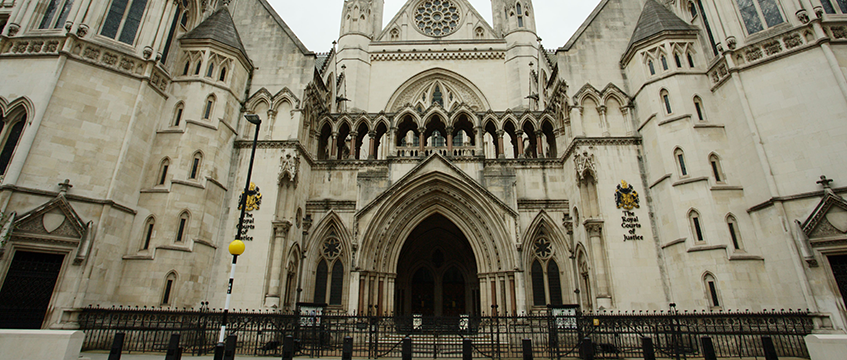In the fourth, and final, article in our series comparing English and Welsh property law with that in Scotland, Gareth Hale, Bryan Johnston and Kirstin Dunn consider the rules that govern enforcement of rights or contracts in each jurisdiction in the event of a dispute
The first question to ask in any enforcement scenario is always: which country’s law applies? The answer will determine which property law regime applies. It will also determine which rules on time-bar and limitation of claims apply, as they too are different north and south of the border.
Thankfully, the answer is normally straightforward. Most property-related contracts specify the law that is to govern, and the court(s) that will have jurisdiction over, any dispute. If a contract does not specify this, or if a dispute is tortious/delictual rather than contractual, there are default rules which provide that the applicable law and court will be that of the country where the property in question is located.
Scotland and England (references in this article to England/English are to both England and Wales/English and Welsh) each have their own systems of courts and tribunals. In Scotland, most high-value property disputes will come before the Commercial Court of the Court of Session. Claims of less than £100,000 must be raised in the relevant Sheriff Court. Disputes concerning the enforceability, variation or discharge of real burdens (covenants) are determined by the Lands Tribunal for Scotland.
In England, most high-value property disputes will be High Court cases and are likely to end up in the specialist Business and Property Courts. The County Court deals with a considerable number of lower-value property disputes, business lease renewals and possession matters. There is also a specialist tribunal structure that deals with certain residential property, leasehold valuation and rateable valuation matters.
There is an appeal structure that overlays both jurisdictions. The main appeal court in Scotland is known as the Court of Session (Inner House). In England, it is the Court of Appeal. The Supreme Court is the common final court of appeal for both jurisdictions.
Types of court order
Broadly speaking, the categories of court order available in both jurisdictions are the same, being:
- order for payment;
- injunction (known in Scotland as interdict), ie a negative order to refrain from doing something; and
- specific performance (known in Scotland as specific implement), ie a positive order to do something.
Such court orders are only enforceable within the jurisdiction of the court that granted the order. However, it is possible for an order issued in one part of the UK to be registered in another part of the UK, which then allows it to be enforced as if the judgment had originally been issued by the court of registration. This can be important if court proceedings have to take place in one part of the UK but recovery/enforcement is likely to take place in another.
The remedy of damages (ie monetary compensation) is available in both jurisdictions. Historically, this has been the primary remedy for contractual breach in England, whereas in Scotland the primary remedy has been specific implement. The best example of this in a property context is the Scottish judiciary’s willingness to enforce “keep-open” obligations imposed on tenants in commercial leases.
The courts in England are far more reluctant to grant positive orders for performance; however, this is perhaps changing, as in Blue Manchester Ltd v North West Ground Rents Ltd [2019] EWHC 142 (TCC); [2019] PLSCS 30 the court granted specific performance, ordering the landlord to make repairs.
Charging order/inhibition
A party seeking to enforce a court order for payment in either jurisdiction can take steps to restrict a defendant’s or defender’s ability to deal with its property.
In Scotland, a pursuer can do this by registering an inhibition (either pursuant to a court order for payment/document of debt or, if a court is satisfied that it is necessary in the circumstances, pending the outcome of litigation). The practical effect of an inhibition is to prevent a defender from voluntarily selling, granting security over or (in certain circumstances) leasing its property.
The closest equivalent in England is a charging order registered to enforce a court judgment. The practical effect of the order is similar to that in Scotland, ie the judgment debt is to be paid from the proceeds of any disposal, subject to any prior-ranking security.
Commercial leases
Enforcement of monetary obligations
In Scotland, an expedited method of debt recovery known as “summary diligence” can be utilised by landlords of commercial leases to recover arrears of rent (and in some cases other sums payable under a lease). It is available if the lease has been registered “for execution” in a register called the Books of Council and Session. Most commercial leases are so registered.
It allows arrears to be recovered using the same enforcement tools available to a party holding a court order for payment, ie arresting the tenant’s bank account (or other sums due to the tenant that are in the hands of a third party); attaching movable property owned by the tenant and selling it in satisfaction of arrears; and registering an inhibition against the tenant.
There is no direct equivalent to summary diligence in England. However, English landlords can seek enforcement under commercial rent arrears recovery (CRAR). Where CRAR applies, a landlord can instruct an enforcement agent to ultimately sell the tenant’s goods in order to recover rent arrears. CRAR has replaced “distress”. A key feature of CRAR is that it only applies to arrears of rent, and not service charge or insurance rent. Notice must be given to the tenant prior to the exercise of CRAR by a certified enforcement agent.
Forfeiture/irritancy
Different rules govern termination of a lease by a landlord in the event of tenant breach. In Scotland, this is known as “irritancy”. There is a statutory ground for irritancy, which is two years’ non-payment of rent, although this is virtually unused in practice. It is standard for Scottish commercial leases to provide the following grounds for irritancy: (a) non-payment of rent or other sums for a period of 14 days (or sometimes longer); (b) breach of a non-monetary obligation; and (c) tenant insolvency.
However, there are statutory protections for tenants: in the case of breach, a pre-irritancy warning letter has to be served, requiring the breaches identified to be remedied within a specified/reasonable notice period; and a landlord can only irritate for a non-monetary breach if a “hypothetical reasonable landlord” would irritate in all of the circumstances. Unlike the situation in England, once irritancy has occurred, a tenant has no right to seek relief from the court. Irritancy cannot be undone.
In England, this is known as “forfeiture”. A landlord can only forfeit an English lease if it contains an express right to do so. This is standard in practically all commercial leases. Grounds for forfeiture are typically breach of any term of the lease (eg payment of rent, alienation, repair, etc) and the occurrence of any insolvency event. As in Scotland, there are statutory requirements on the landlord to serve a warning notice requiring the breach to be remedied within a reasonable period. However, there is no need to serve any warning notice in respect of non-payment of rent.
In England, it is possible for a landlord to effect forfeiture by peaceable re-entry, whereas in Scotland a court order is required before the landlord can change the locks and grant a new lease. Special rules will apply in respect of certain insolvency procedures that will impact on how forfeiture/irritancy can be effected.
Disclaimer
In the event of a tenant of English property going into liquidation, the tenant’s liquidator may unilaterally disclaim a lease, provided it is an “onerous” contract. Liquidators cannot unilaterally disclaim a Scottish lease.
Dilapidations
In England, dilapidations (ie damages for breach of repairing obligations under a lease) are subject to a statutory cap, measured by reference to the diminution in value of the property. If the landlord is going to carry out works to the property that will render any repairs valueless (eg significant structural alterations/demolition), statute prevents any damages from being recoverable.
In Scotland, dilapidations are usually calculated with reference to the cost of the repairs required (even if greater than the diminution in value of the property). However, under common law a tenant is entitled to argue that damages should be calculated on some other basis (eg if the works will never be carried out because the property is to be redeveloped). Tenants must be mindful that, in recent years, the Scottish courts have been prepared to enforce so-called “dilapidations payments clauses”, which have the effect of fixing the landlord’s claim at the cost of the necessary works regardless of whether or not these works will ever be carried out.
Buyer default
There are differences in what happens if a buyer who has contracted to purchase commercial property fails to complete the purchase. In England, the situation is covered by standard conditions which govern property sale contracts. They set out a late completion and completion notice mechanism.
No standard completion notice mechanisms are followed in Scotland. Also, there is a greater appetite in the Scottish courts to grant the seller of property an order for payment of the purchase price by a defaulting buyer (rather than damages).
Borrower default
The procedure for enforcing a security which has been granted by a borrower in favour of a creditor over property is different north and south of the border.
In England, a fixed charge receiver can be appointed. The receiver will take control of the property and will have the power to manage the property, including the power to dispose of it (using reasonable care to obtain the best price reasonably obtainable at the disposal date). The proceeds of sale are used to satisfy the lender’s debt subject to any prior-ranking security.
It is not possible to appoint a receiver under a fixed charge in Scotland. The principal remedy is to issue a statutory demand for repayment of the debt within two months (known as a “calling-up notice”). Non-compliance with a calling-up notice entitles a creditor to exercise a range of statutory powers, including the right to sell and the right to enter into possession. No court order is required unless the property is used for residential purposes.
Final words
This article only scratches the surface of the issues that can arise in the enforcement of property rights and contracts across the UK. It is vital for litigating parties to seek advice from a lawyer qualified in the relevant jurisdiction or, better still, from a firm with experts in both jurisdictions and with dual-qualified solicitors who are able to translate between the two systems.
Gareth Hale and Bryan Johnston are partners and Kirstin Dunn is a senior associate, all in litigation and dispute resolution, at Dentons
READ MORE:
Part 1 – English and Scottish law: The basics
Part 2 – English and Scottish law: Fundamental differences remain
Part 3 – English and Scottish law: Real estate financing










